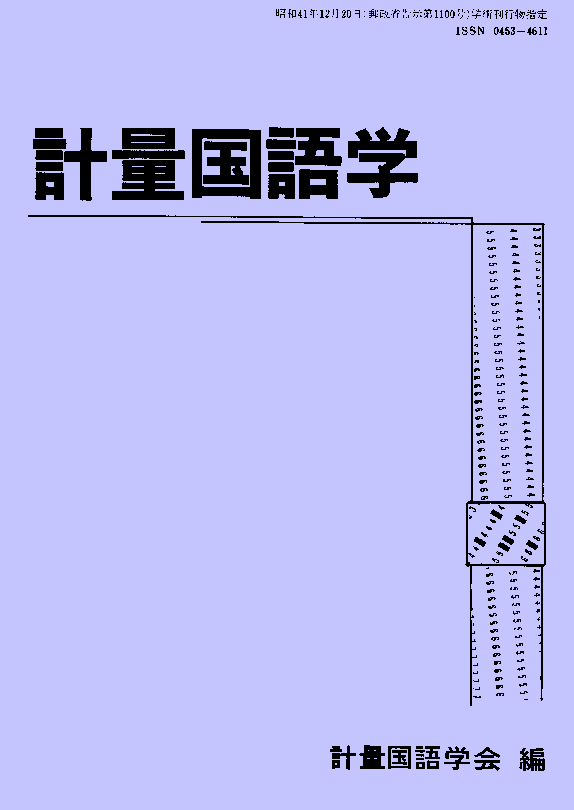Volume 33, Issue 6
Special Section of the Full Paper Presented at the 65th Annual Meeting
Displaying 1-5 of 5 articles from this issue
- |<
- <
- 1
- >
- >|
Special Section of the Full Paper Presented at the 65th Annual Meeting
-
Article type: Paper B
2022Volume 33Issue 6 Pages 373-388
Published: September 20, 2022
Released on J-STAGE: September 20, 2023
Download PDF (980K)
General Section
-
Article type: Book Review
2022Volume 33Issue 6 Pages 389-393
Published: September 20, 2022
Released on J-STAGE: September 20, 2023
Download PDF (588K) -
Article type: Book Review
2022Volume 33Issue 6 Pages 394-398
Published: September 20, 2022
Released on J-STAGE: September 20, 2023
Download PDF (580K) -
Article type: Book Review
2022Volume 33Issue 6 Pages 399-403
Published: September 20, 2022
Released on J-STAGE: September 20, 2023
Download PDF (620K) -
Article type: Tutorial
2022Volume 33Issue 6 Pages 404-414
Published: September 20, 2022
Released on J-STAGE: September 20, 2023
Download PDF (862K)
- |<
- <
- 1
- >
- >|
